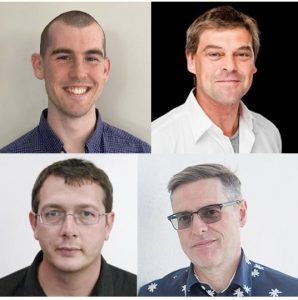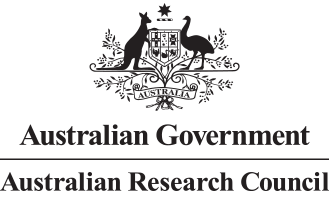January 15, 2021
 OFFshore ITRH members Connor Duffin and Edward Cripps and UWA senior lecturer Thomas Stemler have recently collaborated with Mark Girolami of the University of Cambridge and The Alan Turing Institute to publish landmark research on the combination of data science and computational mathematics to radically improve physical model predictions within the Proceedings of the National Academy of Sciences (PNAS), one of the most prestigious scientific journals in the world.
OFFshore ITRH members Connor Duffin and Edward Cripps and UWA senior lecturer Thomas Stemler have recently collaborated with Mark Girolami of the University of Cambridge and The Alan Turing Institute to publish landmark research on the combination of data science and computational mathematics to radically improve physical model predictions within the Proceedings of the National Academy of Sciences (PNAS), one of the most prestigious scientific journals in the world.
Over seventy years ago the advent of digital computers revolutionized every aspect of human living. Digital computers have transformed our lives by enabling what had been previously impossible, including solutions to large scale mathematical equations which describe the diverse, complex systems within the world around us. The solutions to these equations often rely on the Finite Element Method (FEM), a tool which provides computer simulated solutions to otherwise unsolvable mathematical models.
We are currently living through another period of technological revolution with the advent of ways in which data can be gathered at a scale and quality not previously considered possible. The powerful combination of data, which reflects physical reality, with advances in digital computing is now at the cusp of yet more significant advances. As Connor Duffin noted “This provides the opportunity to couple statistical techniques with FEMs to lay the mathematical foundations of the digital twin revolution. Until now, how data can be taken directly into account has been missing from FEMs.”
This is exactly what the team of mathematicians and statisticians from the UWA, the Turing and Cambridge have recently achieved. They proposed that the FEM should be redesigned from the ground up: “By accepting that our mathematical descriptions of complex systems can be wrong and not capture all aspects of the system we were able to define a statistical description of the Finite Element Method which then provided a very natural and entirely novel way to blend data and mathematical models in a really powerful way”, said Mark Girolami.
The PNAS paper demonstrates the method in the context of improving our understanding of ocean solitons, i.e. large amplitude internal waves which occur on Australia’s North West Shelf and elsewhere around the world. Scientifically, solitons are significant events that introduce turbulence and mixing that impacts local fertilization, and hence biology, due to nutrients from the seabead being dispersed into the water column. For engineering practice, predicting the occurrence and magnitude of solitons is of particular interest to the Australian offshore industry as it impacts the safety and operation of current and future assets.
Additional information:
Connor Duffin is a PhD Candidate at the University of Western Australia, supported by the ARC ITRH for Offshore Floating Facilities (www.offshorehub.edu.au). Edward Cripps is a Senior Lecturer at the University of Western Australia, and a Chief Investigator in both the ARC ITRH for Offshore Floating Facilities, the ARC Data Analytics for Resources and Environments ITTC (www.darecentre.org.au) and the future ARC ITRH for Transforming energy Infrastructure through Digital Engineering (https://www.news.uwa.edu.au/archive/2020070212204/awards-and-prizes/new-wave-federal-funding-transform-offshore-energy-industry/). Thomas Stemler is a Senior Lecturer at the University of Western Australia. Mark Girolami is the Sir Kirby Laing Professor of Civil Engineering at the University of Cambridge and the leader of the Data-centric engineering program at The Alan Turing Institute (www.turing.ac.uk).









